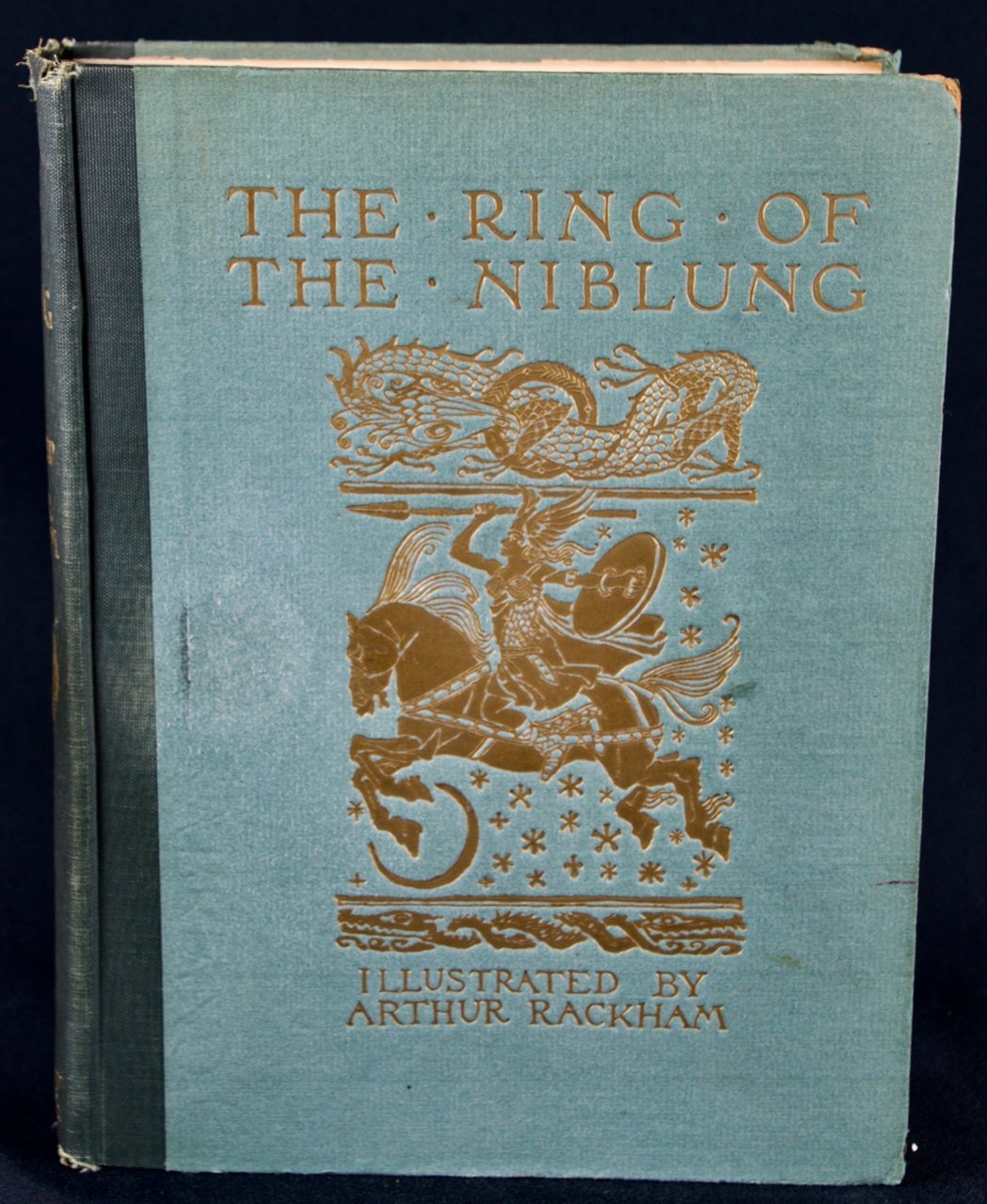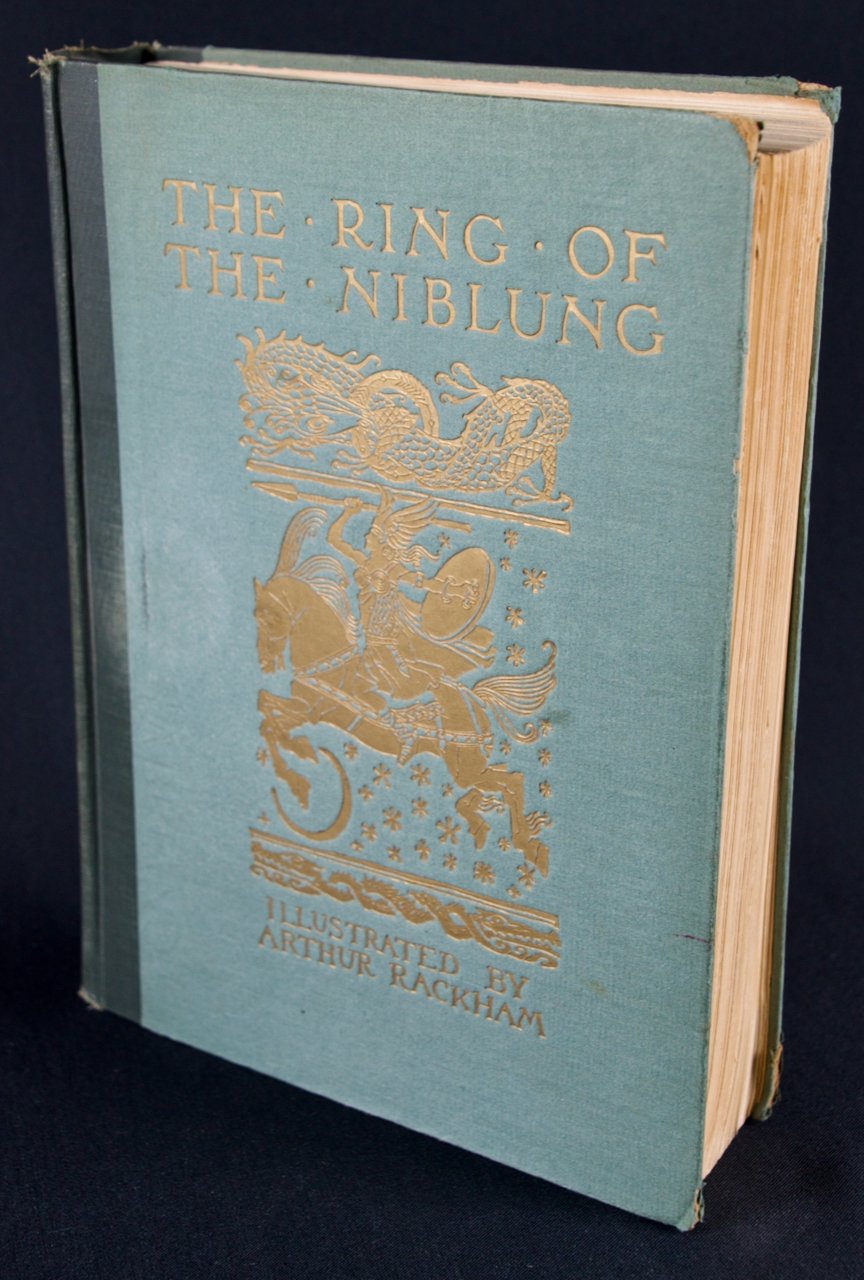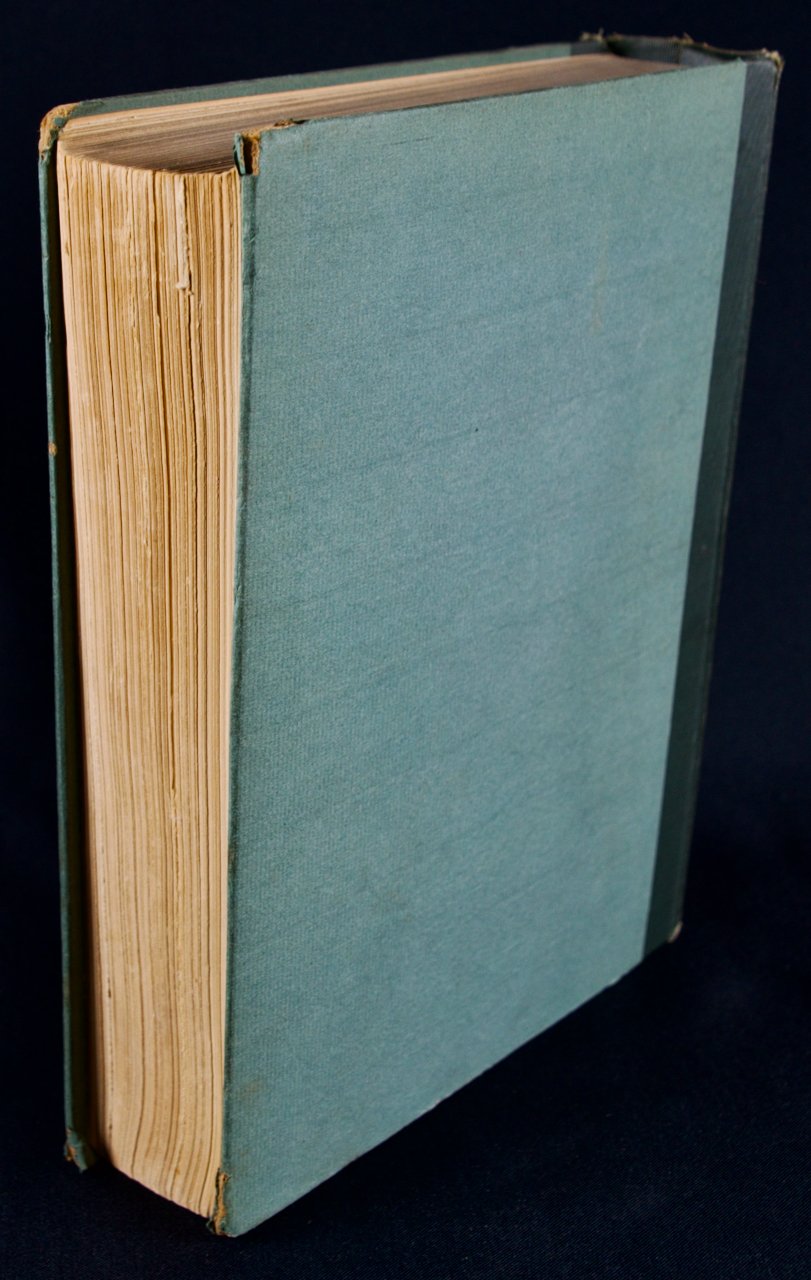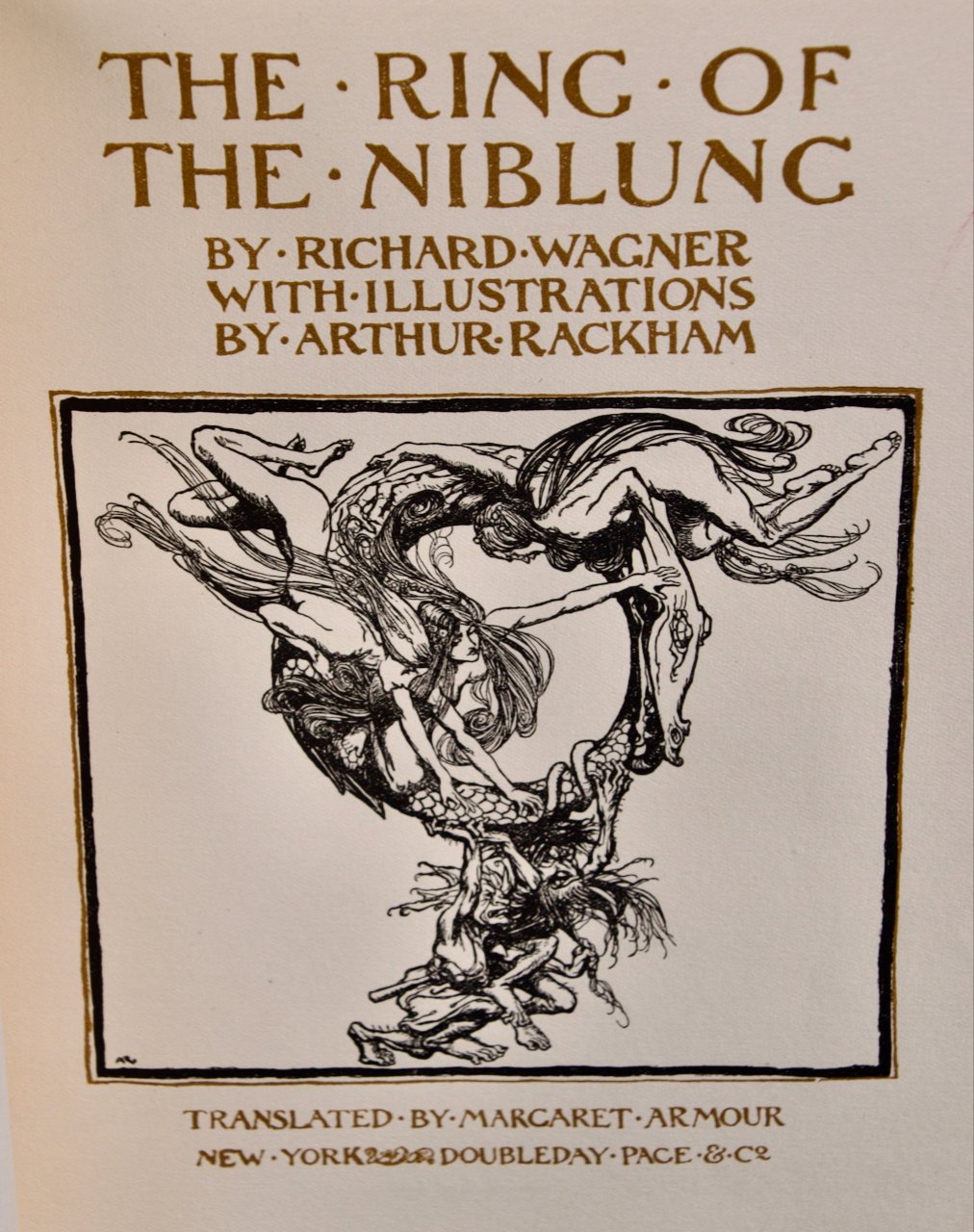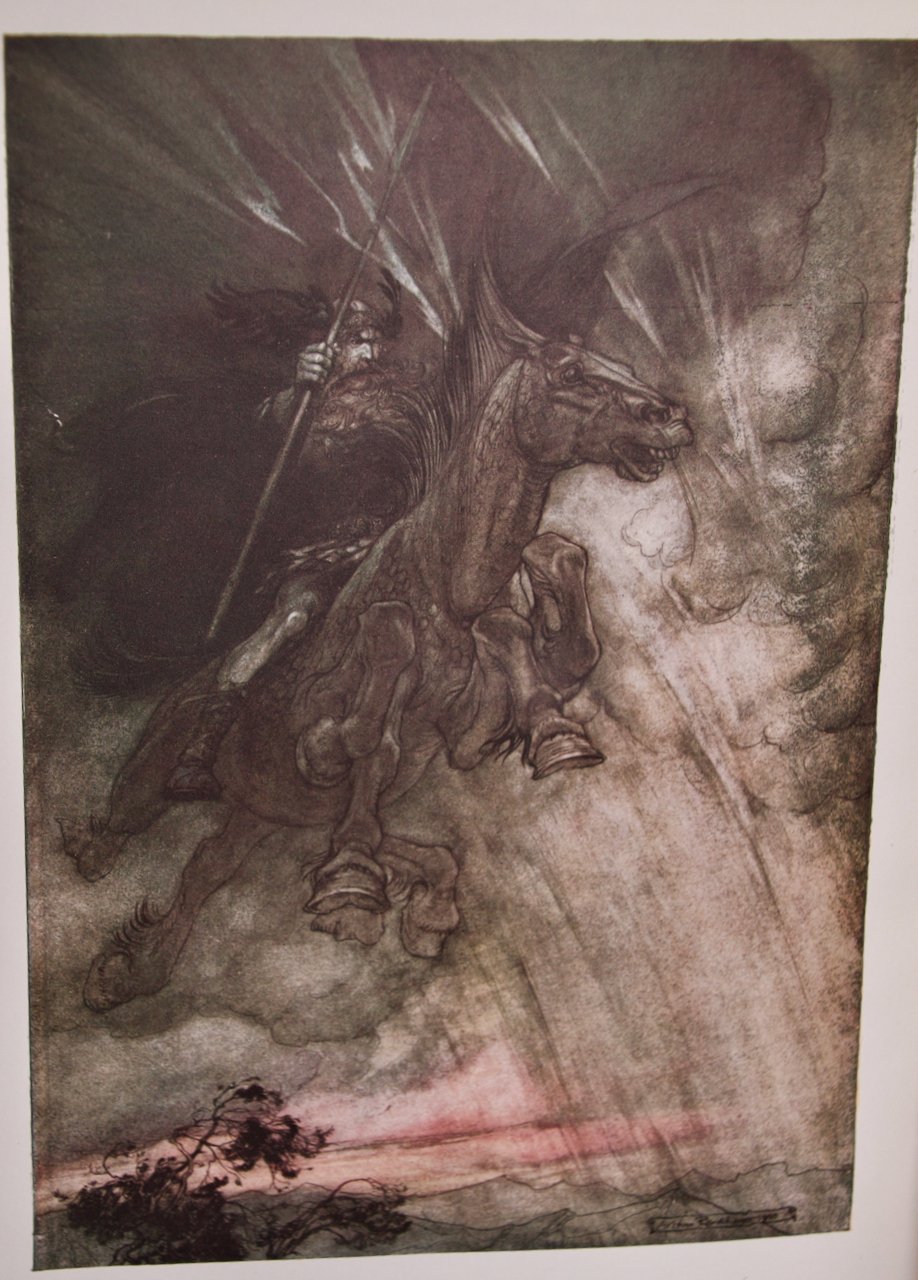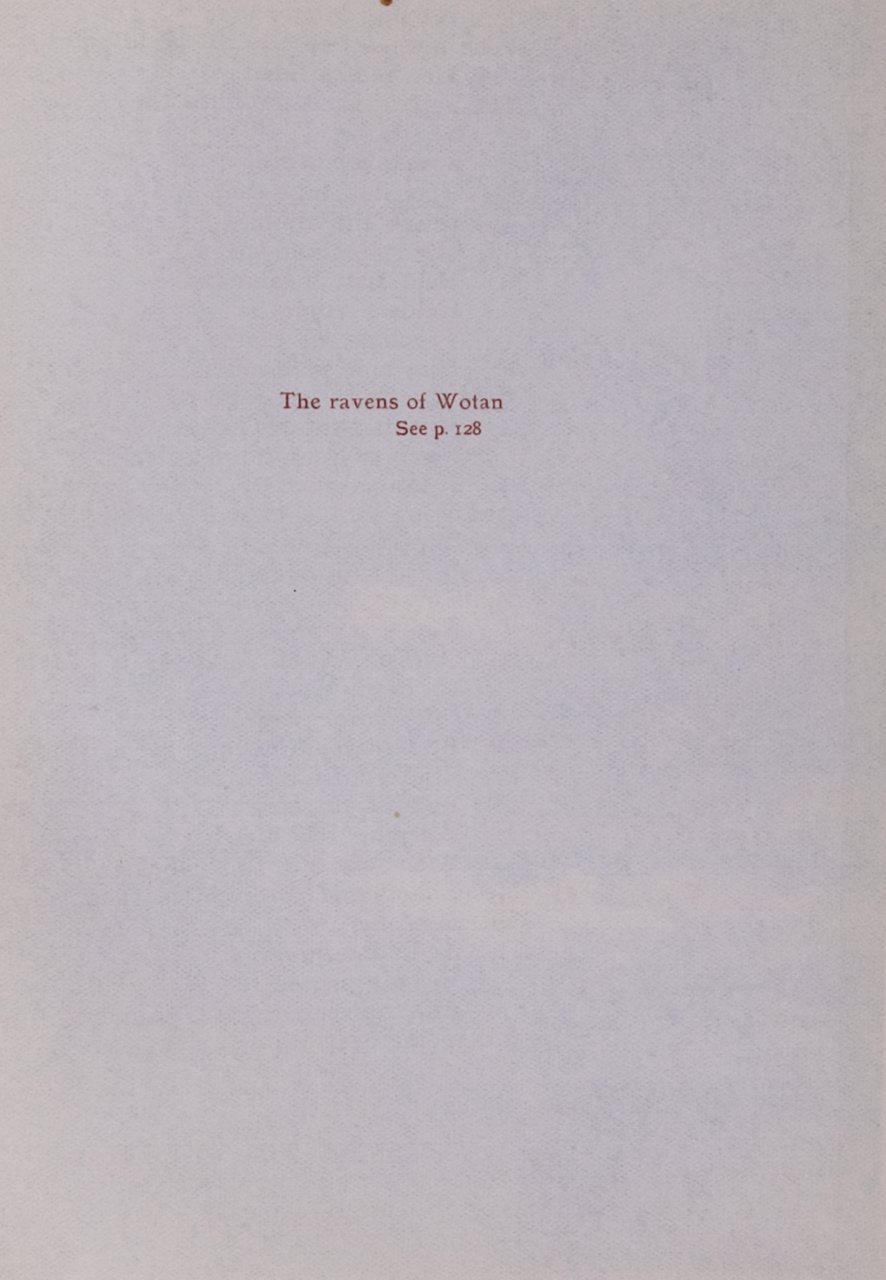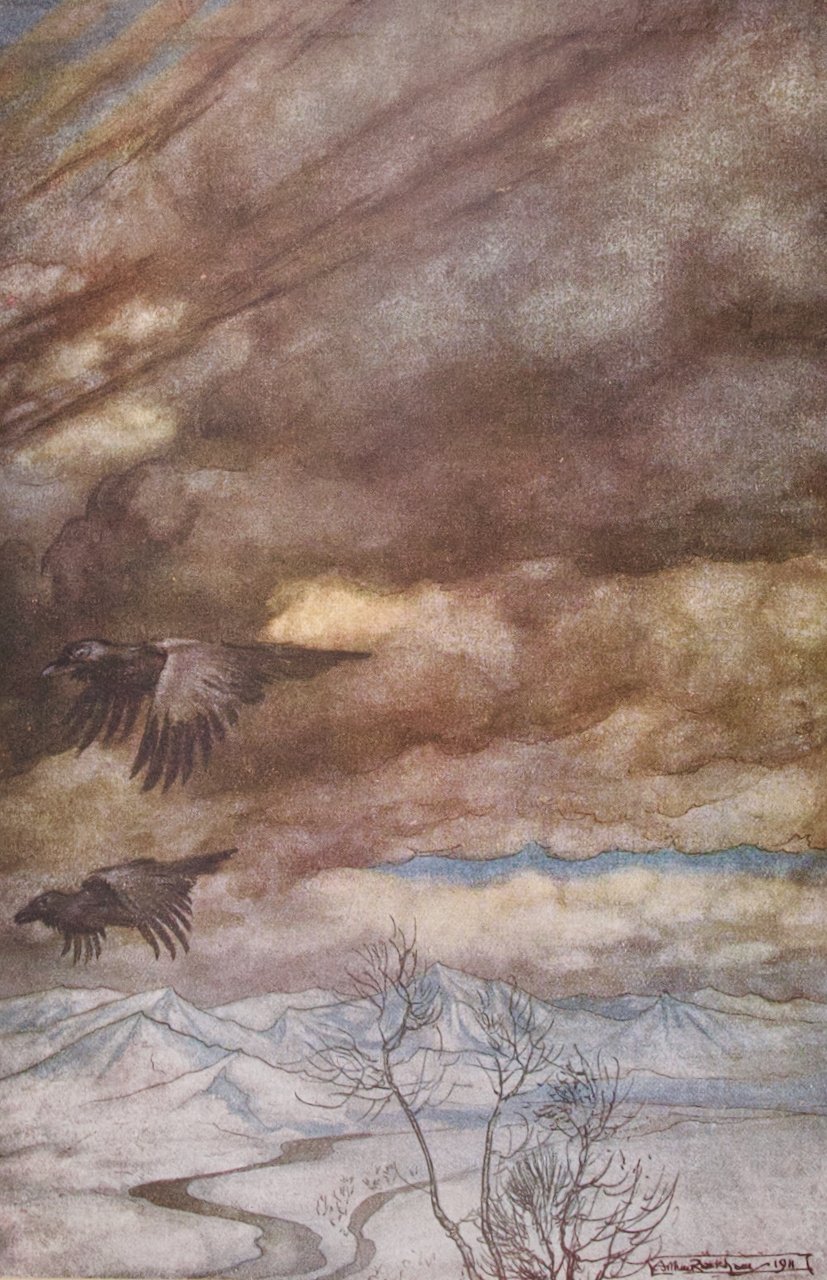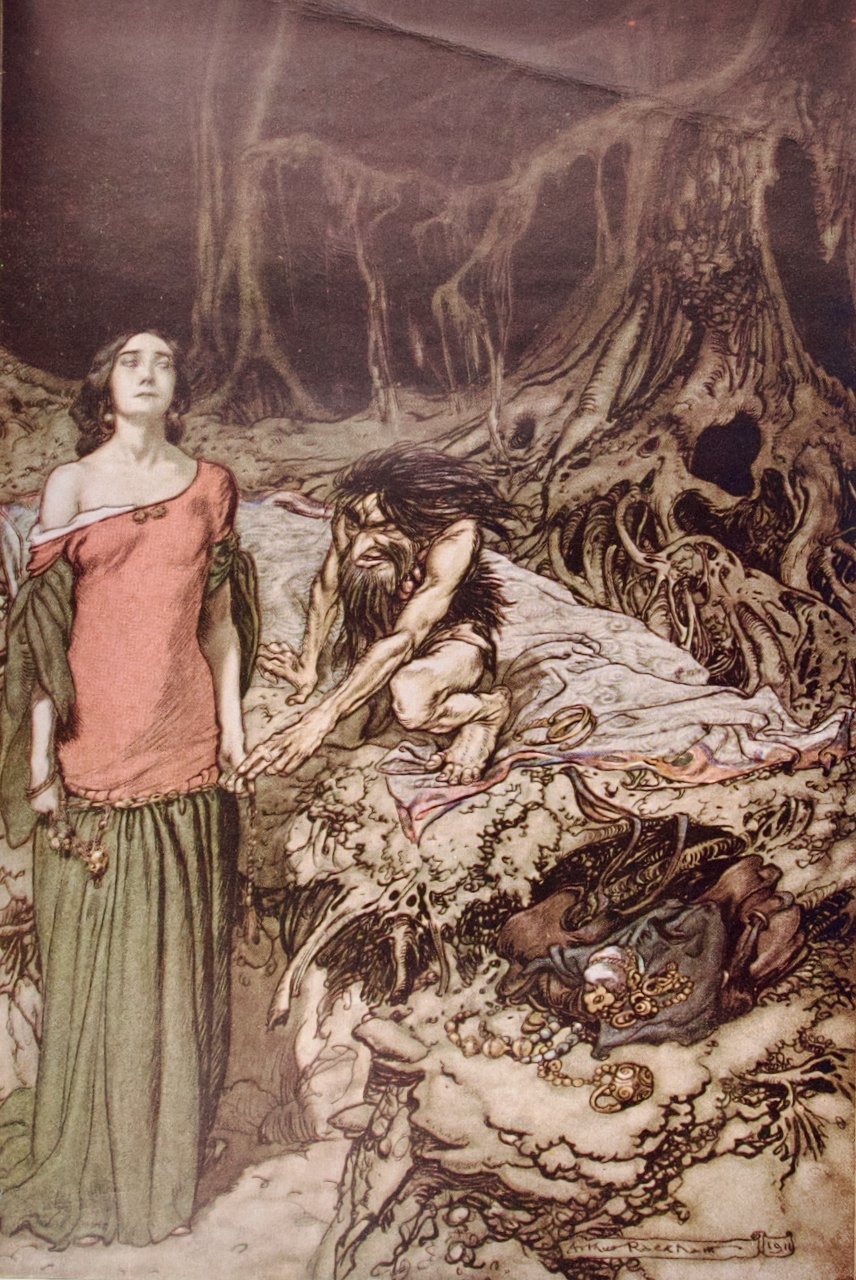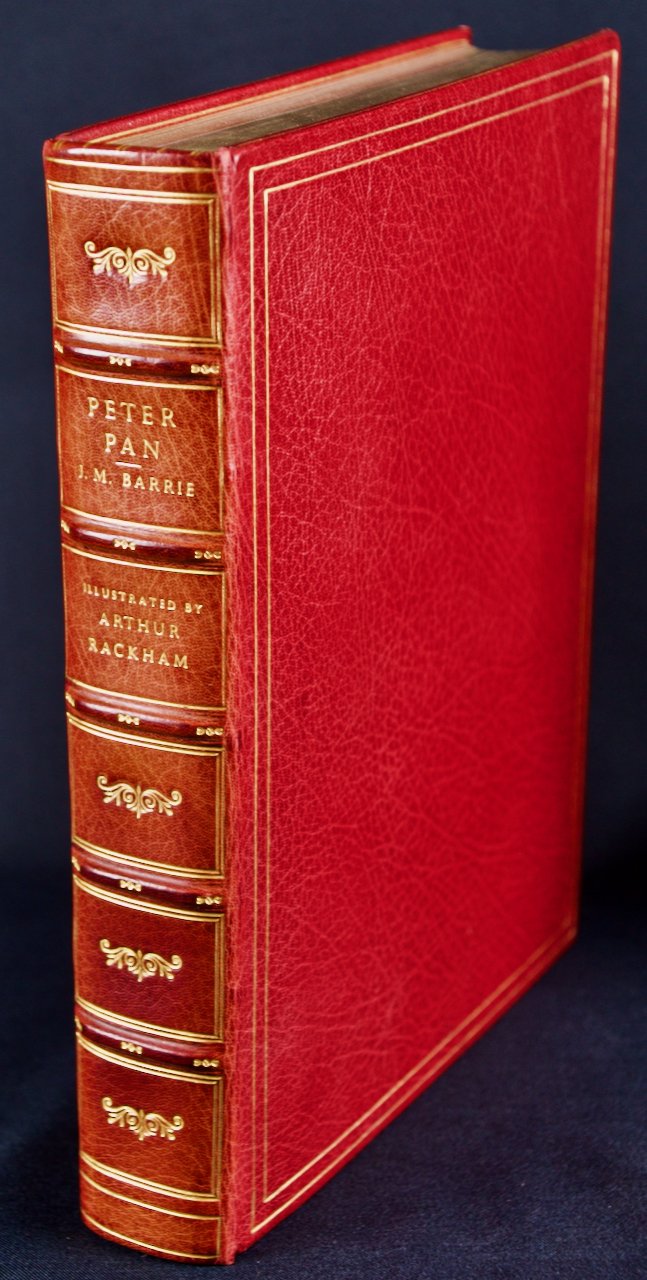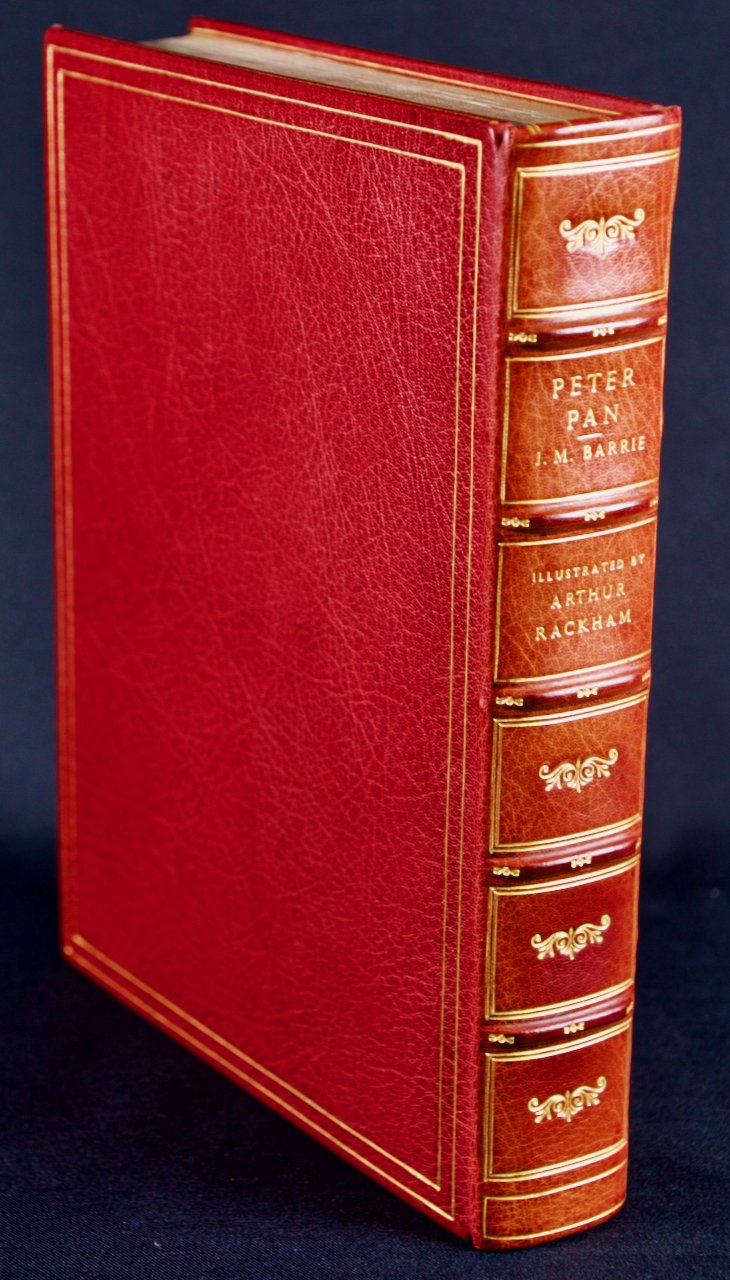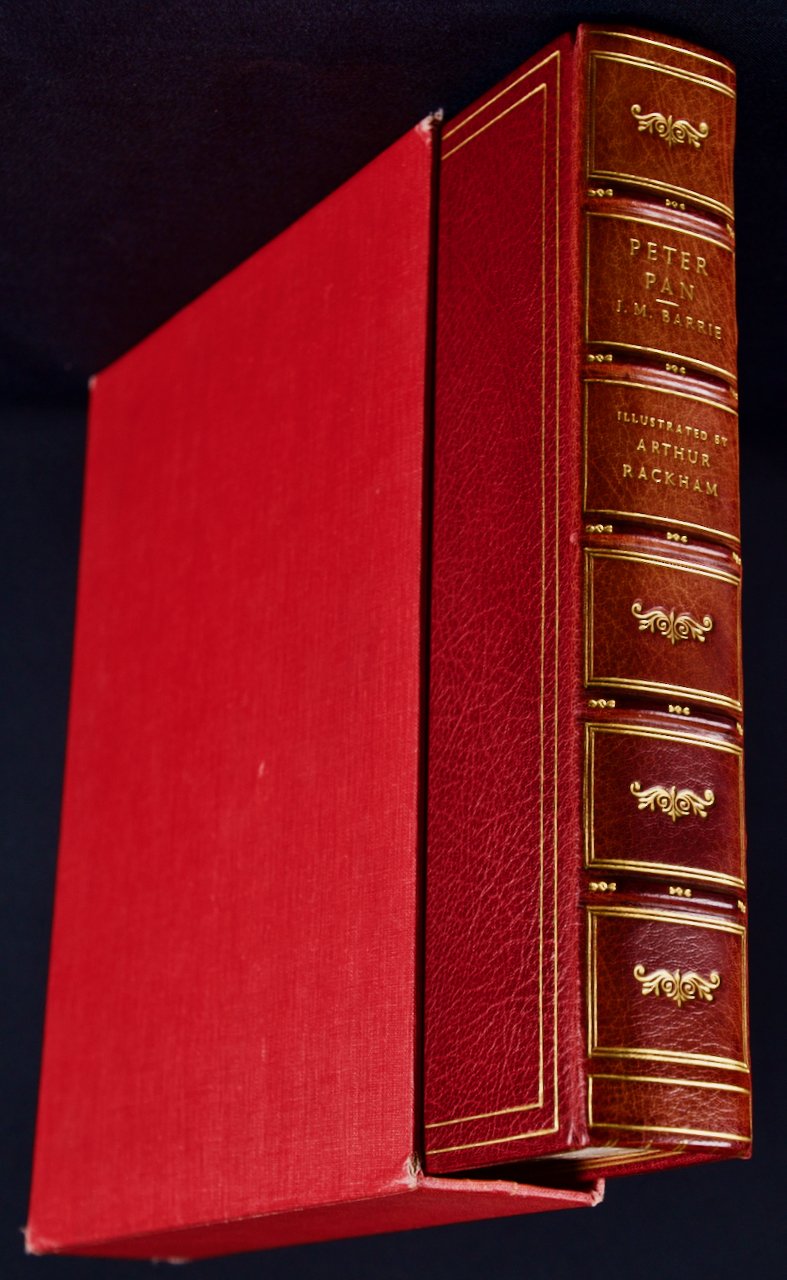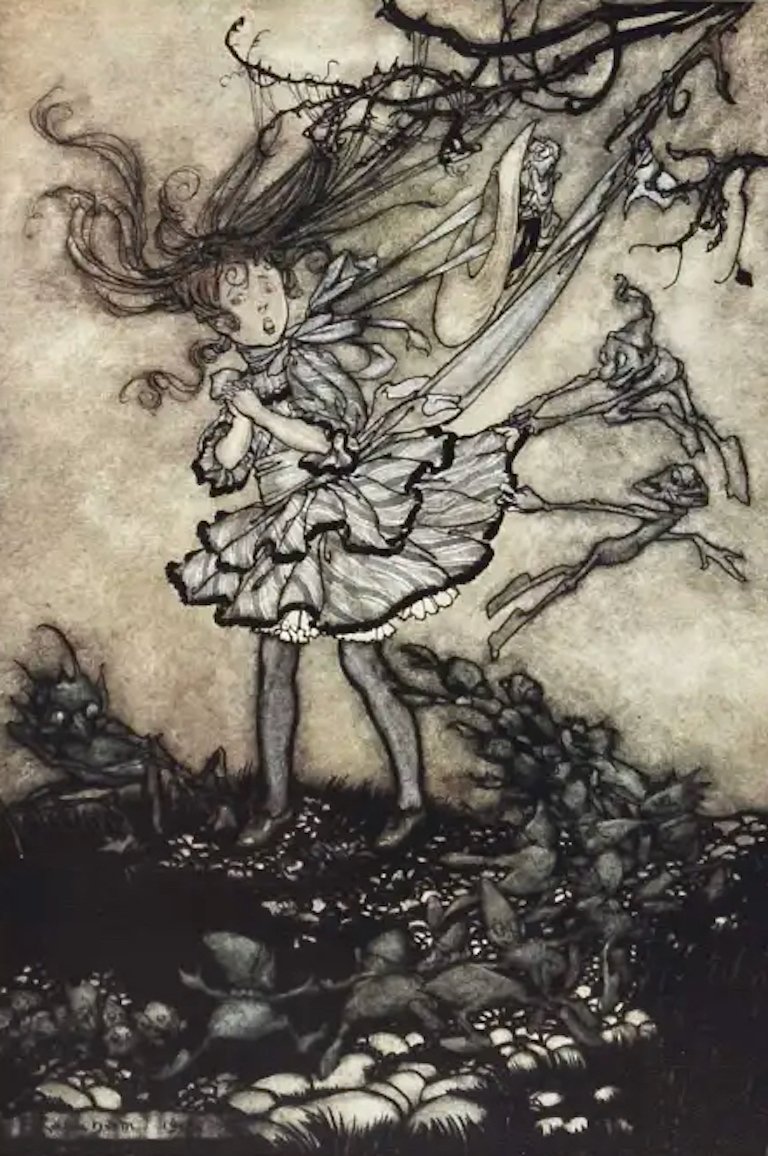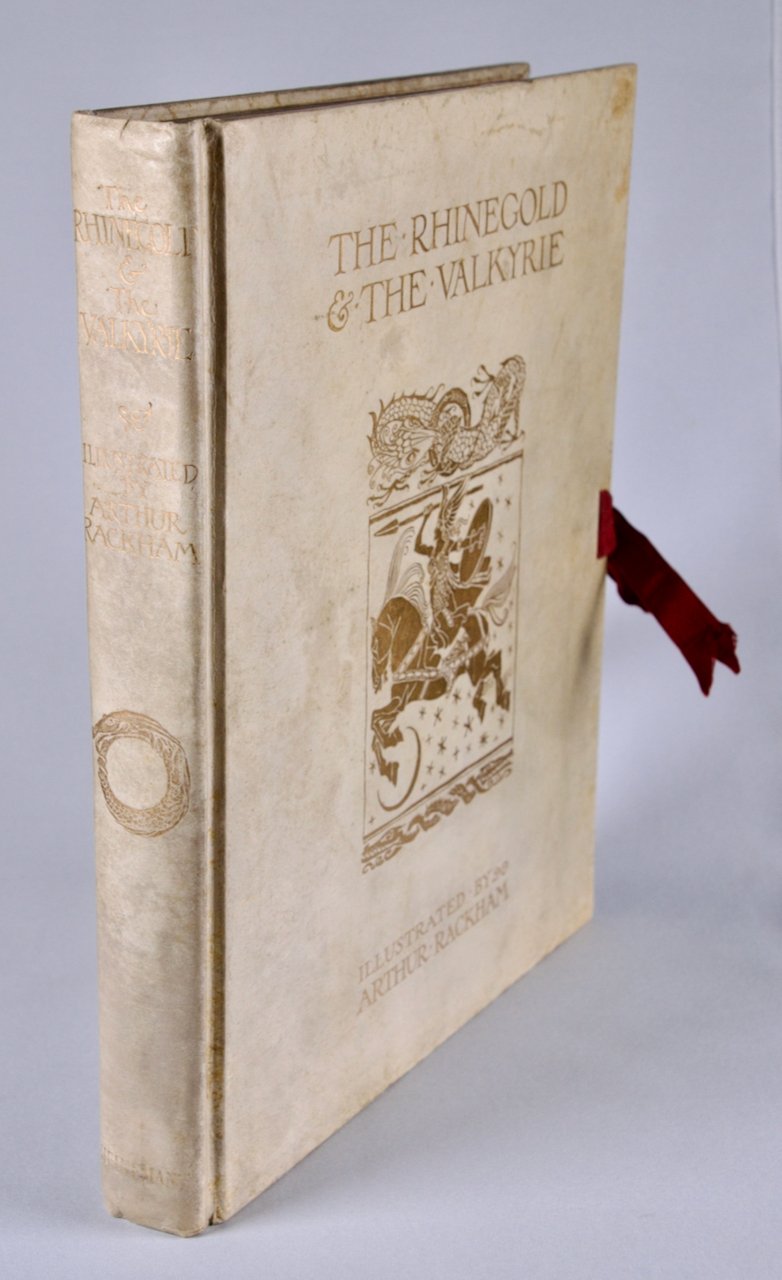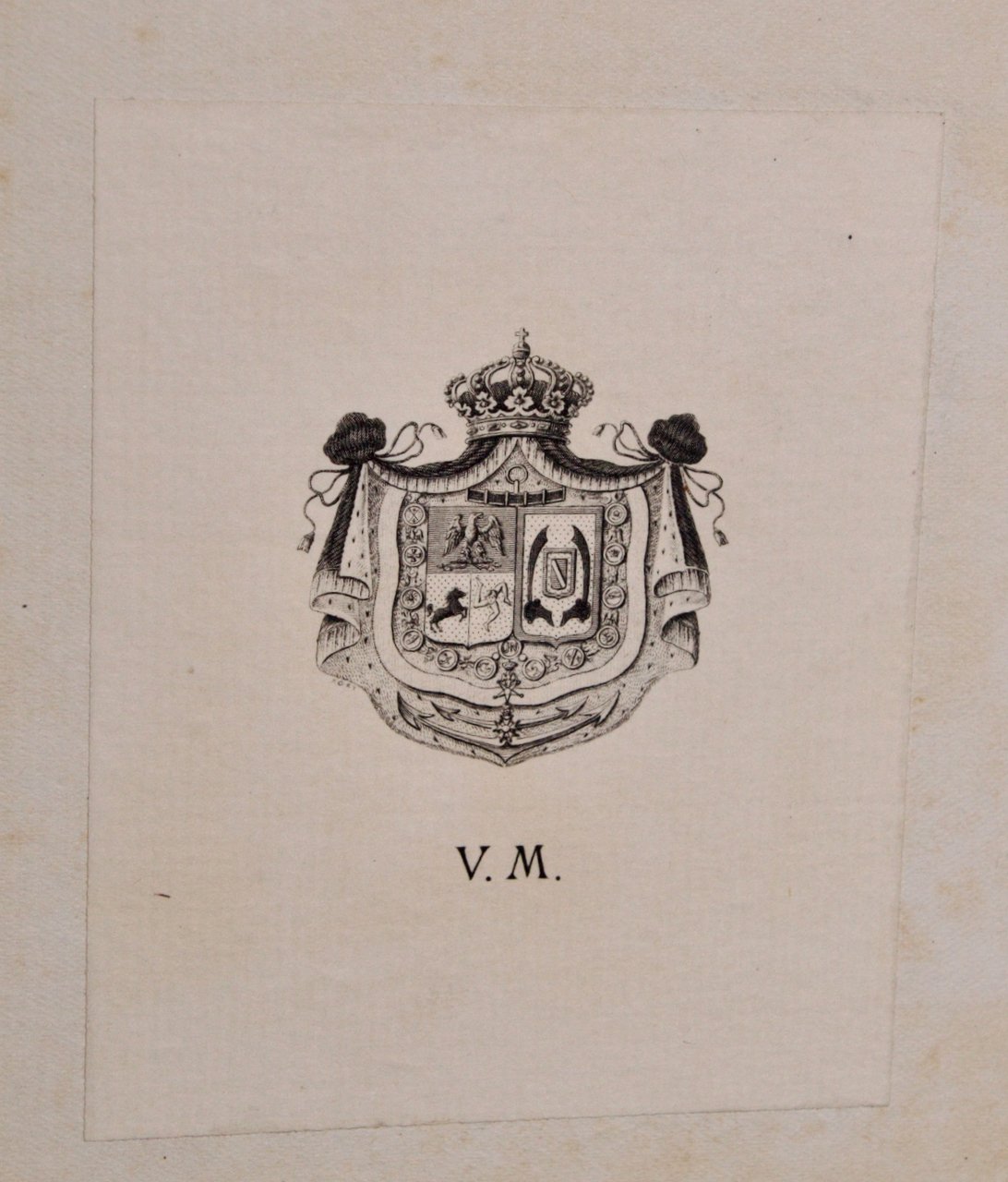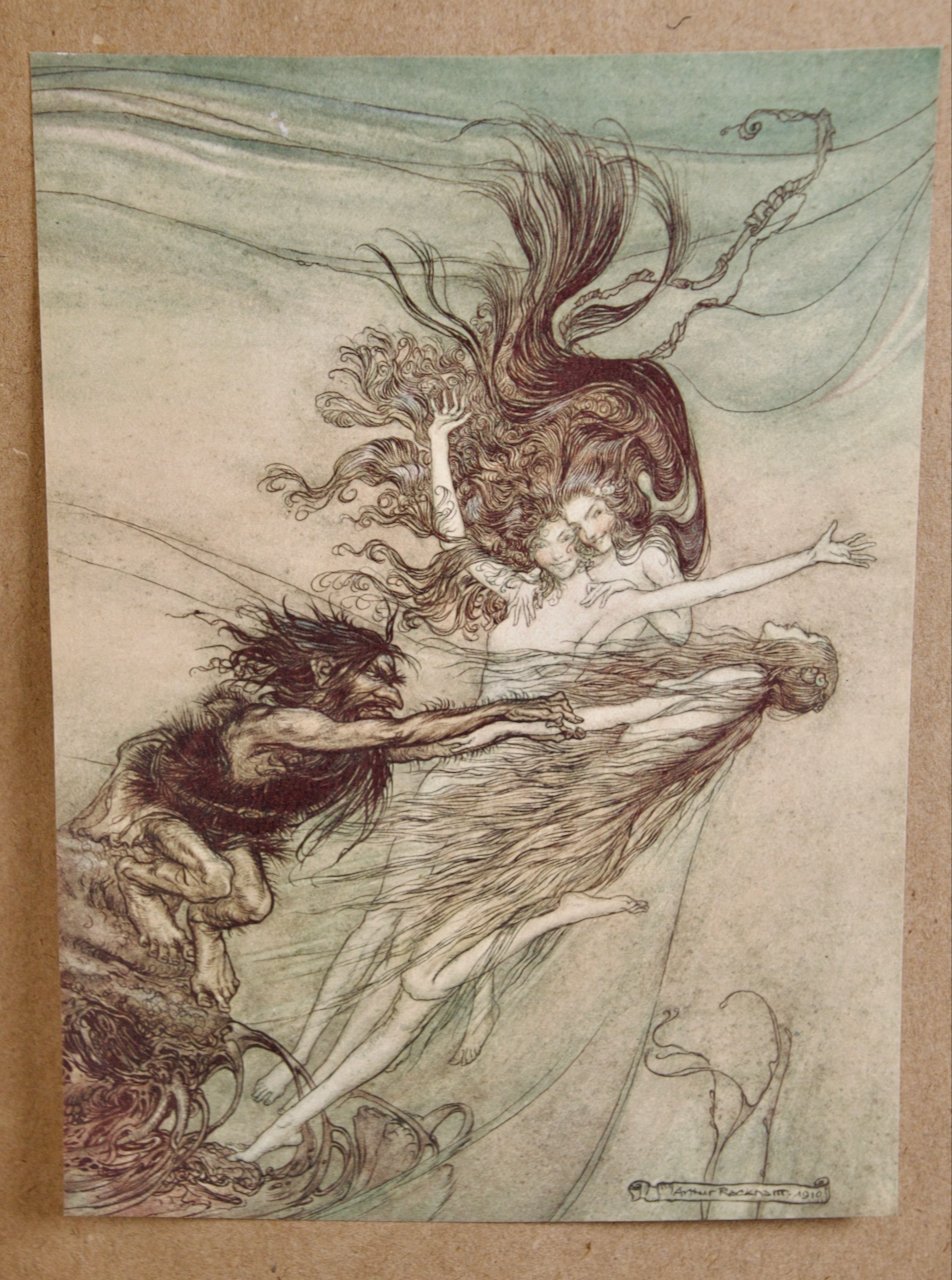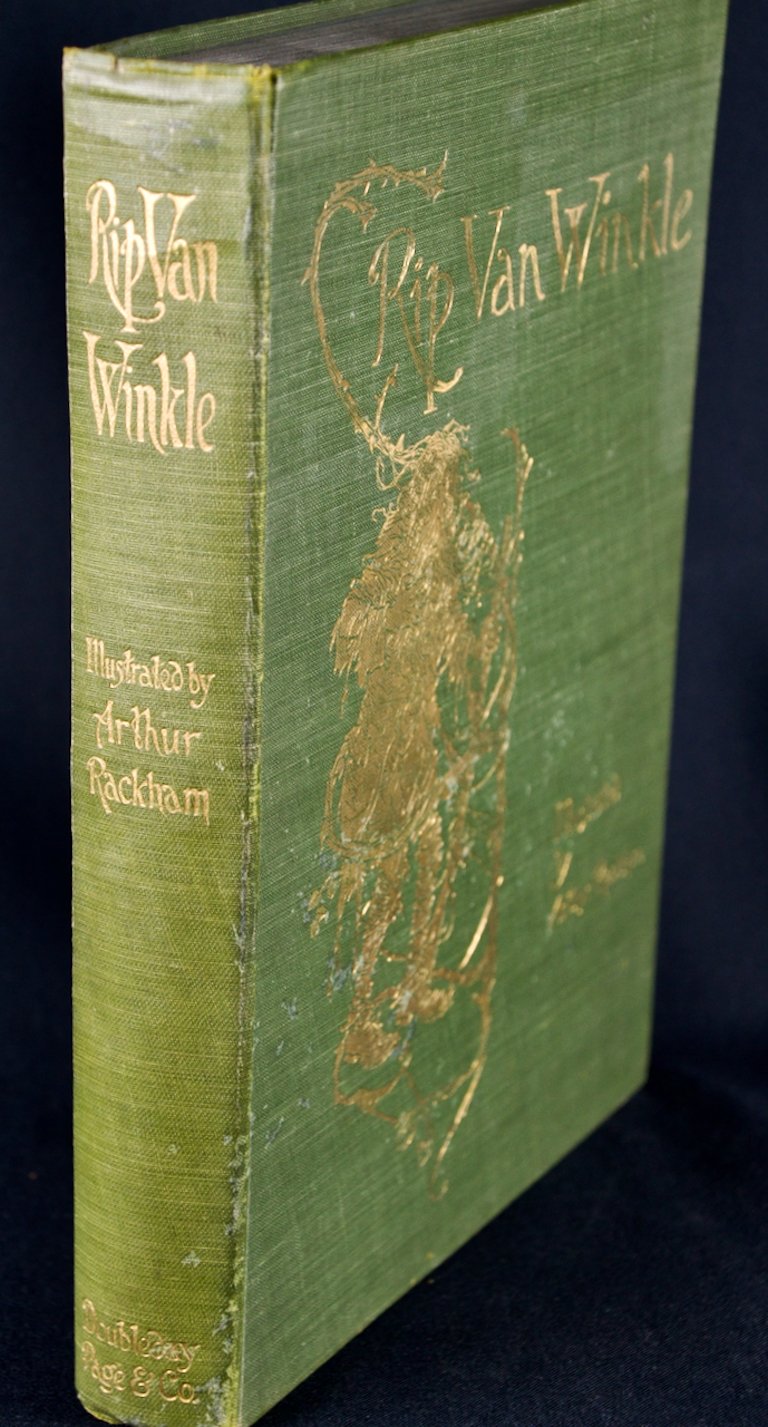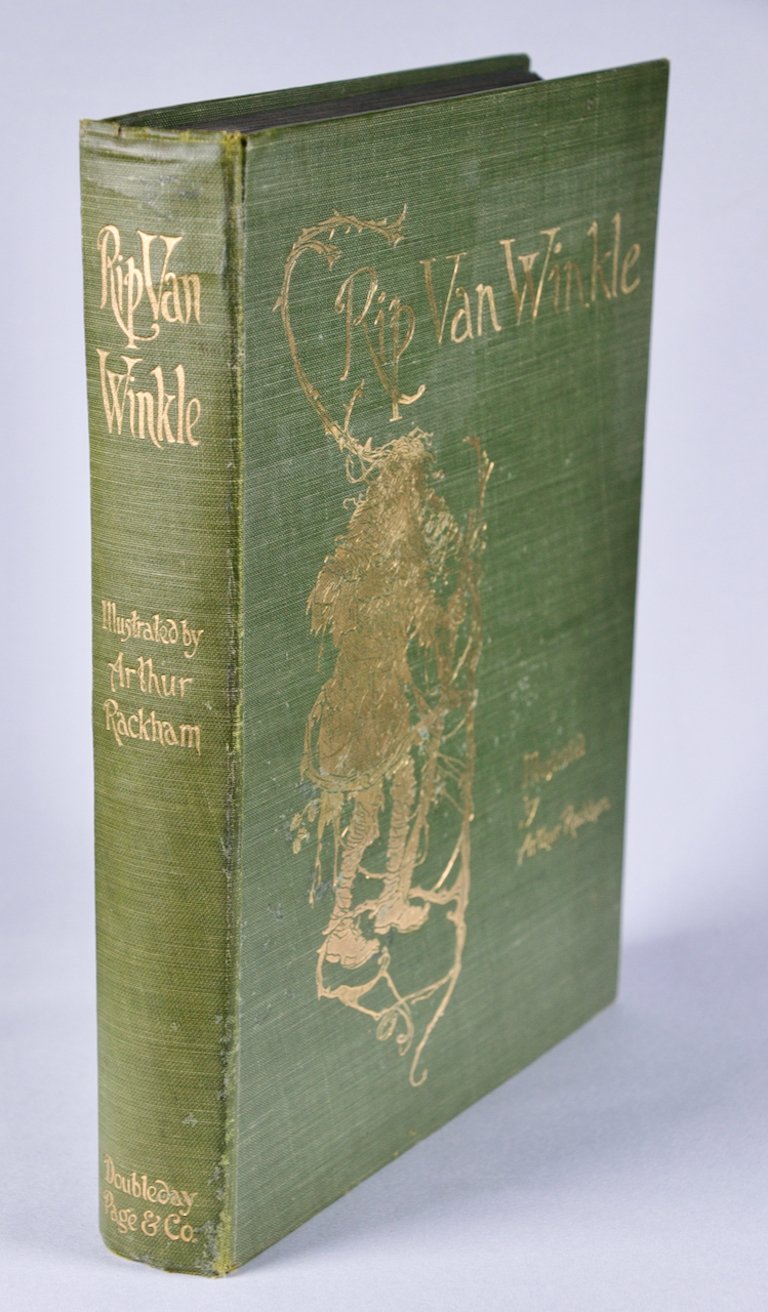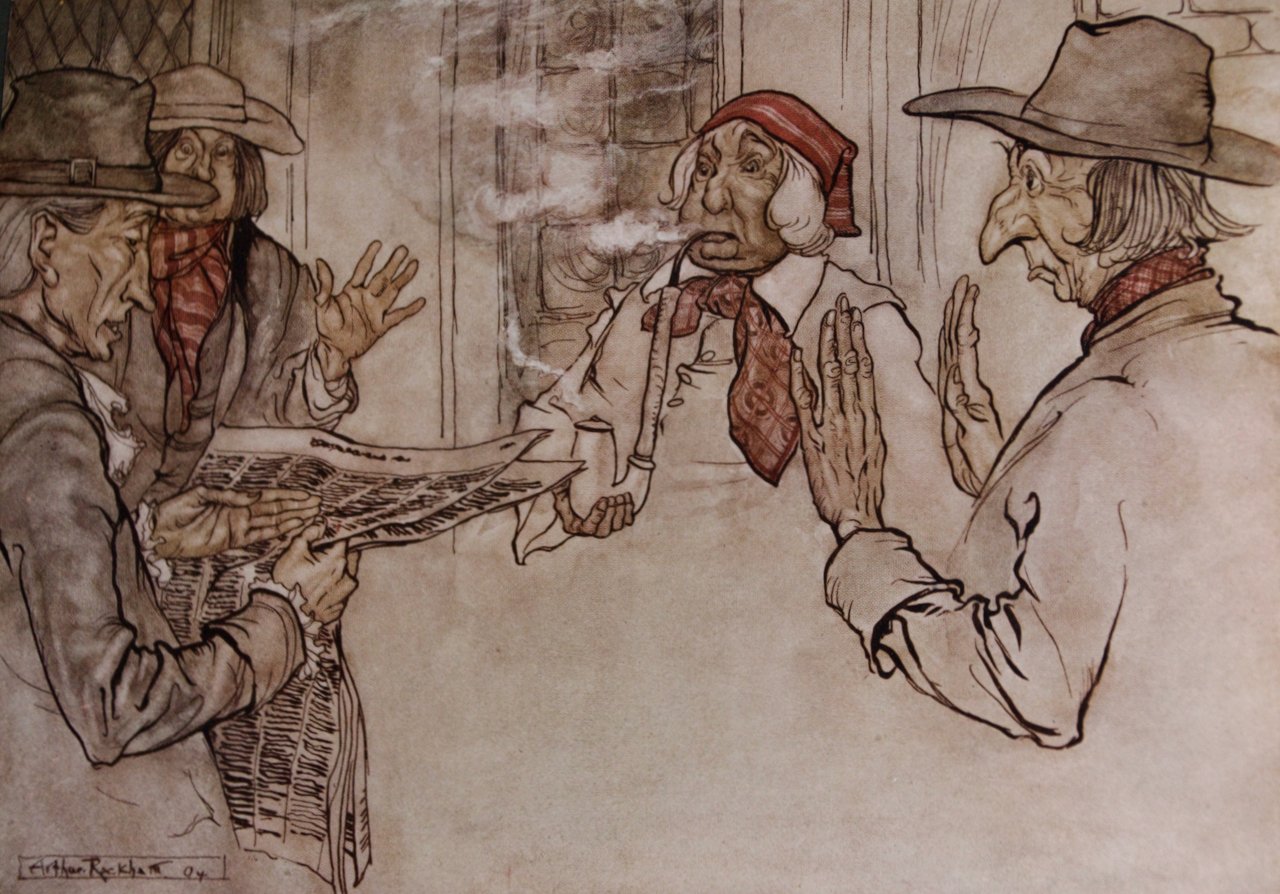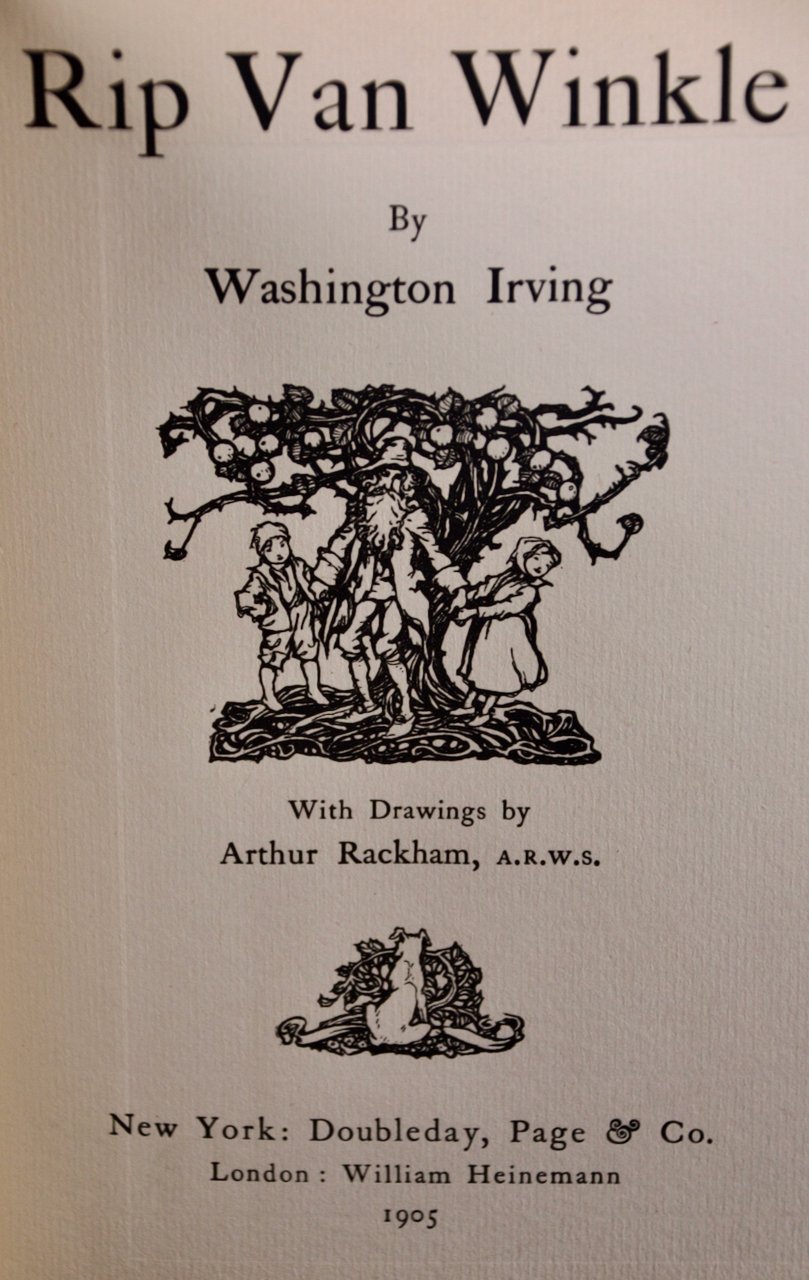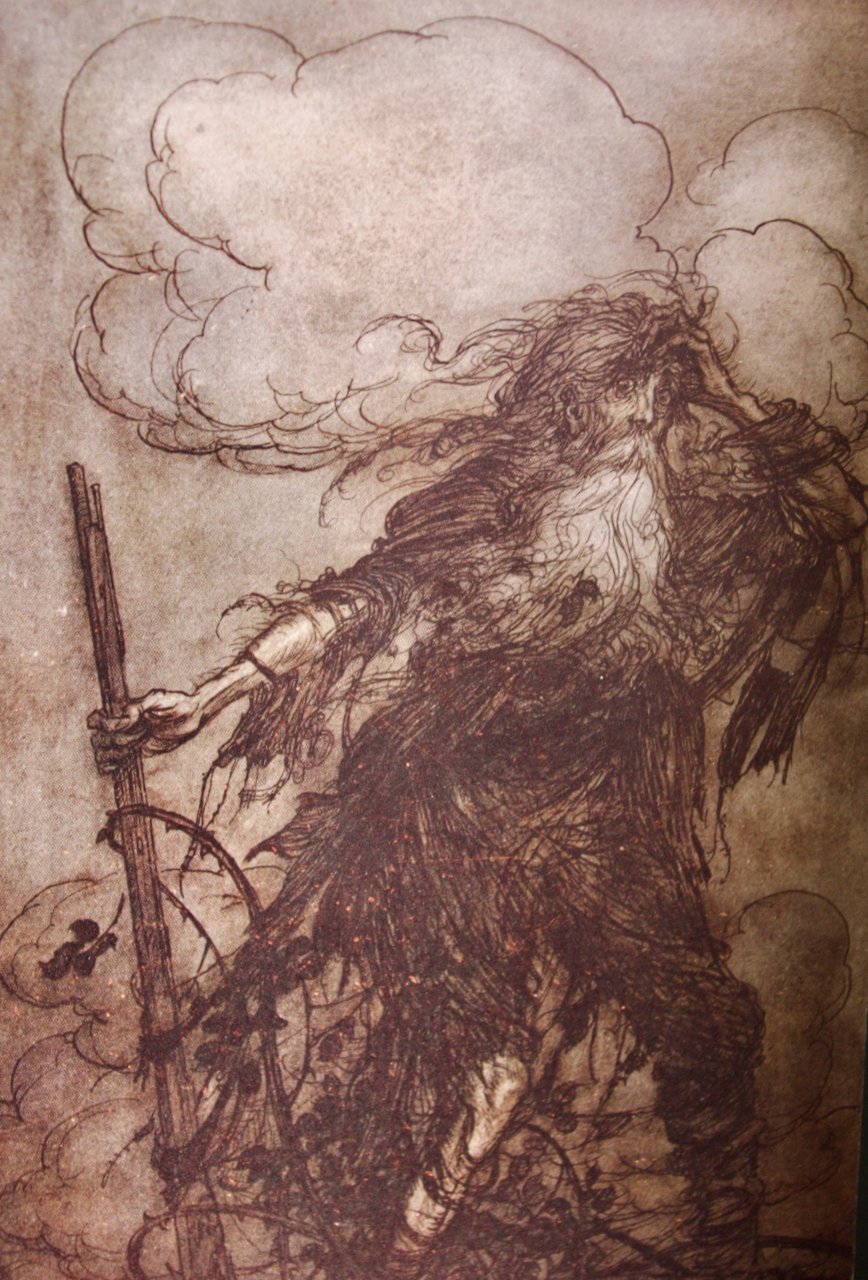The Ring of the Niblung by Richard Wagner, Illustrated by Arthur Rackham
"The Ring of the Niblung", "The Rhinegold: Prelude; The Valkyrie: First Day of the Trilogy; Siegfried: Second Day of the Trilogy; The Twilight of the Gods: Third Day of the Trilogy" by Richard Wagner and translated into English by Margaret Armour. It was published in New York in 1910 by Doubleday, Page & Co. It contains 26 full page color plates, each with a printed tissue overleaf, as well as textual vignettes, all created by Arthur Rackham. The boards are a teal blue color and the spine is covered in a charcoal grey colored cloth. There is gilt embossed text and an illustration on the front board, as well as the spine. There is bumping of the corners and a short tear of the head of the spine. The book is otherwise in good to very good condition.
Author: Richard Wagner
Illustrator: Arthur Rackham
Creation Year: 1910
Dimensions:
Height: 10 in (25.4 cm)
Width: 7.63 in (19.39 cm)
Depth: 1.88 in (4.78 cm)
Materials: Leather, Paper
Condition: See description.
"The Ring of the Niblung", "The Rhinegold: Prelude; The Valkyrie: First Day of the Trilogy; Siegfried: Second Day of the Trilogy; The Twilight of the Gods: Third Day of the Trilogy" by Richard Wagner and translated into English by Margaret Armour. It was published in New York in 1910 by Doubleday, Page & Co. It contains 26 full page color plates, each with a printed tissue overleaf, as well as textual vignettes, all created by Arthur Rackham. The boards are a teal blue color and the spine is covered in a charcoal grey colored cloth. There is gilt embossed text and an illustration on the front board, as well as the spine. There is bumping of the corners and a short tear of the head of the spine. The book is otherwise in good to very good condition.
Author: Richard Wagner
Illustrator: Arthur Rackham
Creation Year: 1910
Dimensions:
Height: 10 in (25.4 cm)
Width: 7.63 in (19.39 cm)
Depth: 1.88 in (4.78 cm)
Materials: Leather, Paper
Condition: See description.
"The Ring of the Niblung", "The Rhinegold: Prelude; The Valkyrie: First Day of the Trilogy; Siegfried: Second Day of the Trilogy; The Twilight of the Gods: Third Day of the Trilogy" by Richard Wagner and translated into English by Margaret Armour. It was published in New York in 1910 by Doubleday, Page & Co. It contains 26 full page color plates, each with a printed tissue overleaf, as well as textual vignettes, all created by Arthur Rackham. The boards are a teal blue color and the spine is covered in a charcoal grey colored cloth. There is gilt embossed text and an illustration on the front board, as well as the spine. There is bumping of the corners and a short tear of the head of the spine. The book is otherwise in good to very good condition.
Author: Richard Wagner
Illustrator: Arthur Rackham
Creation Year: 1910
Dimensions:
Height: 10 in (25.4 cm)
Width: 7.63 in (19.39 cm)
Depth: 1.88 in (4.78 cm)
Materials: Leather, Paper
Condition: See description.
Richard Wagner (1813-1883), well-known composer & musician of the 1800's, spent 26 years from the age of 35 until he was 61, writing the text and composing the music for a four-part music-drama, Der Ring des Niebelungen (The Ring of the Niblung) which was first performed in 1876. The work is based on Norse and German mythology and the characters include gods, half-gods, nymphs, dwarves and giants. Humans do not appear on the scene until the second part of the music-drama which is Die Walkure (The Valkyrie). The Nibelungs are hard-working dwarves whose job it is to mine and forge valuable minerals. The three Rhine-daughters in this work are nymphs that guard the gold that lies at the bottom of the flowing Rhine. A powerful allegory of life, its conflicts, its triumphs and tragedies, The Ring of the Niblung has been compared to J.R.R. Tolkien's Lord of the Rings.
Arthur Rackham (1867–1939) was a famous and beloved British illustrator renowned for his distinctive and enchanting illustrations that brought to life the realms of fantasy and folklore. Born in London, Rackham began his career as a commercial artist, but his talent soon drew attention to his unique style, which melded intricate line work with imaginative, dreamlike colors. Rackham's work is characterized by its intricate detail, whimsical figures, and a distinctive use of color and shadow that evokes a sense of mystery and wonder. He gained widespread acclaim for his illustrations in classic fairy tales and children's literature, including works such as Peter Pan in Kensington Gardens, Alice's Adventures in Wonderland, and Grimm's Fairy Tales. His ability to capture the essence of these stories with both haunting and charming visuals made his illustrations a beloved part of literary history. Rackham's illustrations often feature ethereal, otherworldly creatures and settings that transport readers to magical realms. His style reflects influences from the Pre-Raphaelite movement and the Arts and Crafts movement, but with a unique twist that made his work stand out in the world of illustration. Throughout his career, Rackham's contributions to book illustration were highly regarded, earning him a place among the great illustrators of his time. His legacy continues to influence and inspire illustrators and artists, and his works remain treasured for their beauty and imaginative depth.

